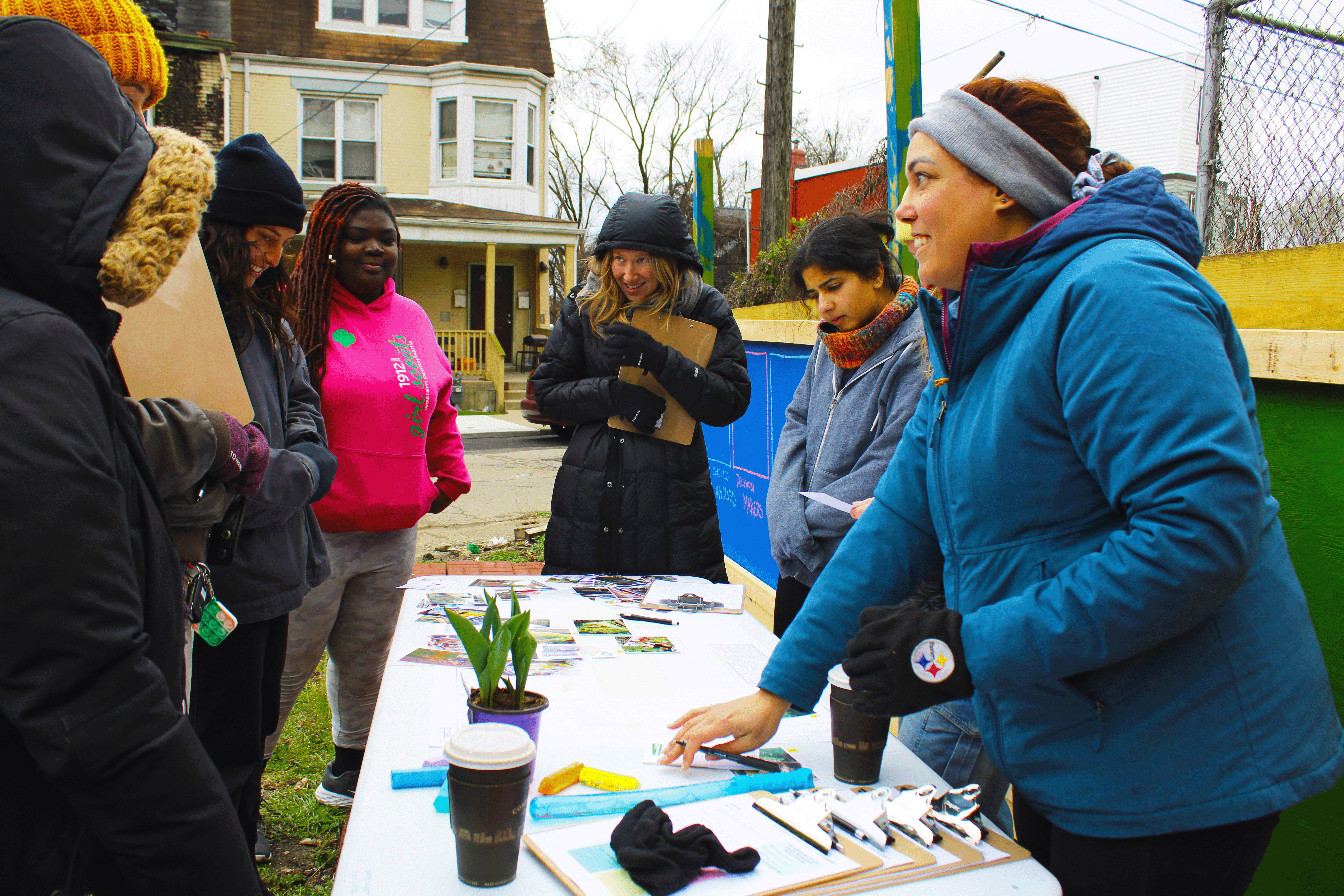Pittsburgh is in a water-rich region, but that doesn’t mean all residents share in the wealth. A new report looks at how the city can provide clean, affordable drinking water to all residents while making sure that the environmental burdens of abundant rainfall don’t unfairly weigh on some communities.
By KARA HOLSOPPLE | The Allegheny Front | April 1, 2021 | Read the full story
“An Equitable Water Future: Pittsburgh” was developed over two years by the Pittsburgh Water Equity Taskforce, with members from the University of Pittsburgh, the Pittsburgh Water and Sewer Authority(PWSA), and leaders from many community groups.
The report identifies five priorities for water equity:
- Water quality and environmental health
- Sustainable stormwater management
- Affordability
- Workforce development
- Water democracy
Recommendations for moving forward
Most people pay water bills, but according to the report, Black and Brown residents and lower income communities in Pittsburgh have been less likely to benefit from investments in water infrastructure to improve water quality.
“So where do we direct those utility dollars and where do we renew our water system infrastructure?” said Will Pickering, Chief Executive Officer of Pittsburgh Water and Sewer Authority. “For example, where do we replace lead lines and how do we do that in a way that’s equitable and takes into consideration different demographic factors?”
Pickering says because of Pittsburgh’s combined sewer system, rainfall can back up sewage into basements, especially in neighborhoods with fewer resources. Not only does it smell bad, but it is also an environmental health problem. Fumes can cause respiratory problems, and according to the report, might be a driving factor in the higher asthma rates in Pittsburgh’s lower income neighborhoods.
The report draws attention to inequities like this at a critical time. PWSA is embarking on a new stormwater management master plan, to meet requirements of the Clean Water Act. It’s an investment of upwards of a hundred million dollars.
As part of the workforce development priority, the task force also made recommendations to invest in people, like developing a Diversity and Inclusion Work Plan for PWSA.
Glenn Grayson Jr., Senior Program Manager for Neighborhood Development at Neighborhood Allies, said the recommendations aim to create an equitable system.
“I’m an African-American male,” Grayson said. “I want other opportunities for people that look like me, because there are jobs that we don’t think about every day, good union jobs.”
Community Input
To achieve water democracy, said Grayson, a diversity of people should be at the table when decisions are made.
“I hope and wish that we could have at least two community residents on the PWSA board. I think that will help,” Grayson said.
Grayson is also adamant that if Pittsburgh is going to have an equitable water system, PWSA should remain a public utility. When it was privately managed from 2012 to 2015, issues over lead levels and mismanagement wound up in court. The case was settled through arbitration in 2018.
Pickering said other members of the task force also felt strongly that PWSA should remain in public hands.
“Public control means that you’re giving access for community input through public hearings, through confirmation of board members in a public setting so that the decision makers at PWSA are publicly vetted, and that decisions are not made behind closed doors,” said Pickering.
The Bigger Picture
This equity report is part of a larger project that’s taken place in six other cities, including Buffalo and Cleveland, headed by the US Water Alliance, a nonprofit that promotes sustainability.
Pickering said the water equity report frames water management and infrastructure in a new way–as a social investment.
“In the last five years, utilities have really started to reexamine the way that they engage with their communities,” Pickering said. “Rather than hiding underground with their pipes and plans, the level of investment that we’re asking from our ratepayers really requires that we engage with them and that we demonstrate we are looking out for their best interest.”
The Pittsburgh Water Equity Taskforce has come a long way, Grayson said, but there is still a lot of work to be done.
“Are we there yet? No. Do I like some of the changes I’ve seen? Yes.,” Grayson said. “But have I still argued and am still arguing about things I want to see change? Yes. And I think that’s fine.”

